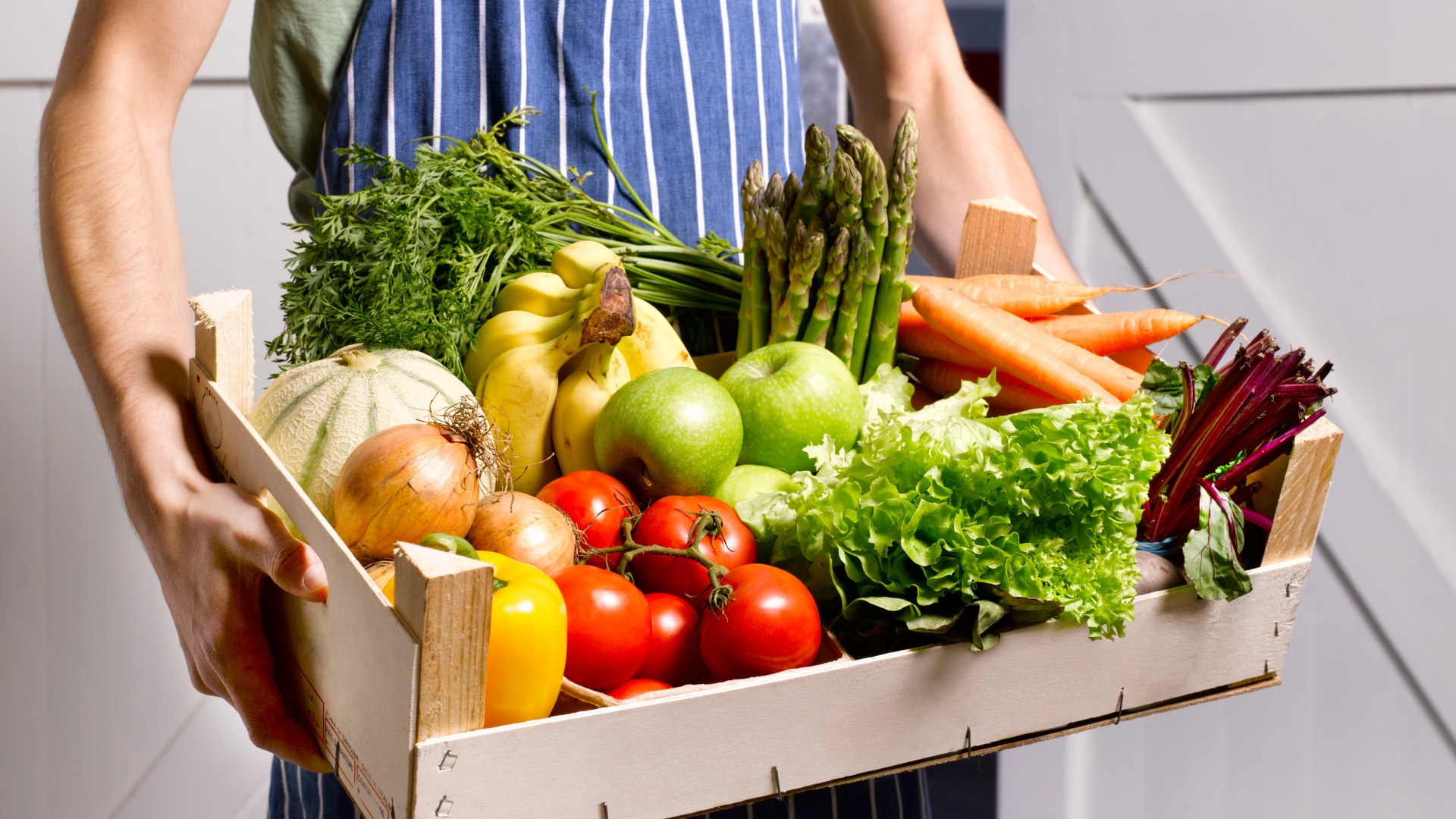IT sounds like something from the pages of a Dickens novel.
But there are worrying signs that scurvy is rearing its head once more.
8

8
With the cost-of-living crisis, more families than ever are struggling to afford basic items and are sacrificing more expensive fruit and vegetables.
Scurvy, which is caused by a lack of vitamin C — found in fruit and veg — was rife, especially among sailors at sea, between the 15th and 18th century.
It is considered rare in modern times, with most outbreaks due to food scarcity among refugees or in war-torn areas.
But doctors are increasingly reporting scurvy in developed countries.
The most recent figures show that 188 people were treated for scurvy in English hospitals in 2022, triple the 61 recorded in 2008.
Dr Helen Wall, senior GP partner from the NHS Oaks Family Practice in Bolton, tells Sun Health: “Scurvy is caused by not having enough vitamin C in your diet over a long period of time.
“Symptoms include feeling very tired and weak, feeling irritable, feeling sad, joint, muscle and leg pain and swollen, bleeding, gums.
“I suspect dentists probably are seeing quite a bit of this.
“One of the key things that is unique to scurvy is developing red or blue spots on the skin, usually the legs and feet.”
It comes as doctors last week commented in the journal BMJ Case Reports on a 50-year-old man diagnosed with scurvy.
He had developed a tell-tale rash, described as red pinpoints across his legs, and had blood in his urine.
The unidentified man could not afford supplements he had been advised to take by a doctor after having weight-loss surgery.
The team wrote: “Further questioning revealed that he was short of cash and neglected his diet, eating little in the way of fruit and vegetables.
“He said that he sometimes skipped meals altogether.”
Blood tests showed he had no traces of vitamin C in his system at all.
The doctors from Sir Charles Gairdner Hospital, Nedlands, Western Australia, said: “Scurvy is still seen as a disease of the past, especially in developed countries.
“The rising cost of living also makes it harder for families to afford good quality nutritious foods, while there have been numerous reports of scurvy arising from complications following bariatric surgery.
“Clinicians should be aware of this fatal but easily curable condition that may still occur in this modern age.”
Other known risk factors for the condition include mental health illness, eating disorders, obesity and alcoholism.
Dr Wall says: “Vitamin C is found mainly in fruits and vegetables, and these are not foods that are easily accessible to many of our population cheaply.
‘NO HOB TO BOIL VEGTABLES’
“Part of the issue is that lots of my patients live with an air fryer or microwave.
“They might not have a working hob to boil vegetables.”
More than one in five Brits were living in poverty in 2021-22, according to the most recent report by The Joseph Rowntree Foundation.
Four in ten of those were in “very deep” poverty, with an income way below the poverty line.
But just like the Victorian era, health inequalities are incredibly prevalent today.
Life expectancy is already far lower in the most deprived parts of the UK, with people dying around 20 years earlier than those in the wealthiest parts.
Signs of scurvy can appear as early as a month after a daily intake of less than 10mg of vitamin C, which is essential for the health of bones, teeth and blood vessels while also supporting immunity and wound healing.
Symptoms can be reversed rapidly by replenishing depleted vitamin C levels.
Similarly, a change in diet can resolve rickets, a bone-deforming disease caused by a lack of vitamin D that has also made a comeback in the UK in recent years.
But when Dr Wall sees patients, she says: “One difficulty I have is that when patients come to me, often as soon as I start to talk about diet and lifestyle, you can almost see their backs go up.
“It doesn’t mean we’re blaming you or fobbing you off, or saying it’s not a medical problem.
“But we know a huge part of keeping us well is what we eat.
“It’s the core basis of our health, our immune system and our ability to stay well and recover from illness.”
THE SYMPTOMS OF SCURVY

8

8

8

8
AND WHAT YOU CAN DO?
THE average adult aged between 19 and 64 needs 40mg of vitamin C a day.
And it does not have to be expensive to get it in your diet, says nutritionist and author Rhiannon Lambert.

8
Rhiannon, who also hosts the Food For Thought podcast, tells Sun Health: “Frozen vegetable options are generally less expensive and retain much of their vitamin C content making them a great alternative for those looking to save money.”
Broccoli, peas, spinach and kale can all be bought frozen, which also reduces waste from fresh vegetables going off before you use them.
Rhiannon says: “A 100g serving of frozen spinach can contain up to 28mg of vitamin C, making it a great addition to a soup, casserole or stir-fry.
“Peas can also be bought in tins, so can still be part of your diet if you don’t have a freezer.”
Other tinned goods high in vitamin C include oranges, grapefruit or pineapple – but buy them in juice, not syrup, which is high in sugar.
Rhiannon says: “Tinned fruits offer affordable, long-lasting options that can be stored for months without spoiling.
“A small tin of mandarin oranges can offer up to 45mg of vitamin C, which meets the recommended daily intake for adults.”
Cooking from scratch using tinned tomatoes can up your vitamin C intake, too.
Rhiannon says: “Often less than 50p a tin, tinned tomatoes can be easily incorporated into meals like soups, pasta dishes and stews.
“Garlic and onion both contain small amounts of vitamin C.
“An excellent and often overlooked source of vitamin C is potatoes, with one medium potato containing around 20mg of vitamin C.
“Sweet potatoes can be roasted, mashed or used in stews and curries.”
“When buying veg, go for green beans, carrots, turnips and cauliflower.
Rhiannon says: “Cabbage is cheap – often less than 50p for a whole one – and versatile, providing about 32mg of vitamin C per 100g.”
VITAMIN C FOOD
Milligrams of vitamin C per 100g serving:
- Red pepper: 95mg
- Orange: 70mg
- Kiwi fruit: 64mg
- Broccoli: 50mg
- Cauliflower: 25mg
- Cabbage: 28mg
- Potato: 20mg
- Tomato, raw: 17mg
- Frozen peas: 8mg
(Source: US Dept of Agriculture)
‘HEALTHY FOOD TOO EXPENSIVE’
JENNY WARD made herself ill trying to afford to live after retiring.
The 74-year-old, who received help from The Sun’s Winter Fuel SOS campaign, has emphysema, which she puts down to poor housing and not being able to put the heating on.

8
She’s also been plagued by bugs as a result of a weakened immune system.
Jenny, from Wakefield, West Yorks, tells Sun Health: “I’m a miner’s daughter, I’ve always worked and been well but I started getting bugs and being poorly because I wasn’t able to eat properly.
“I watched every penny. A lot of fresh fruit and veg was just too expensive.
“I couldn’t afford fruit and oranges to get vitamin C so I was using tomato juice to try and get the nutrients I need.
“I’ve been left with long-term health issues, I think, because my diet was so bad while I was awaiting pension credit.”
Jenny shopped as smartly as she could, buying high-protein tinned kidney beans for pennies as a substitute for meat.
But she says: “A lot of my generation live in poverty and can’t afford the diet they should have to stay healthy.
“It’s not just pensioners that are struggling to afford groceries in the cost-of-living crisis though, it’s young people, families, mothers . . .
“Vitamins and minerals and a good diet shouldn’t be outside of what people can afford.
“It should be a basic human right to be able to eat well enough to stay well.
“I’d feel poorly because I couldn’t eat the right vitamins and things and that’s not right.
“It could be storing up poor health for a lot of people.”




